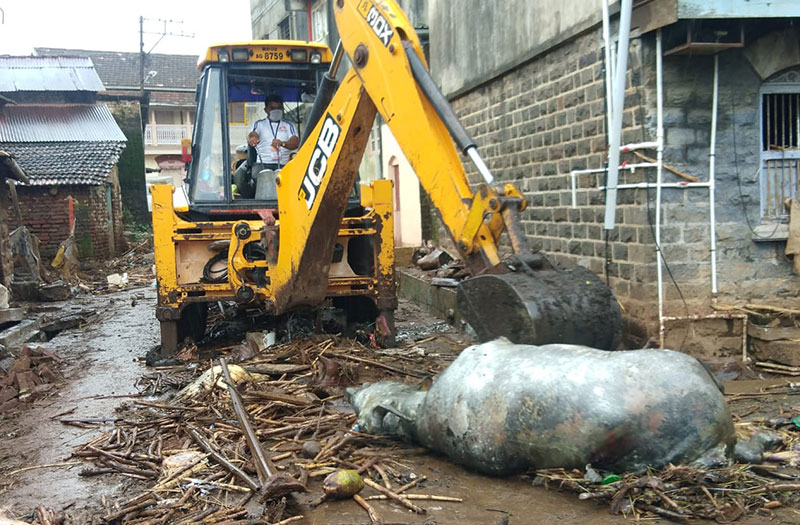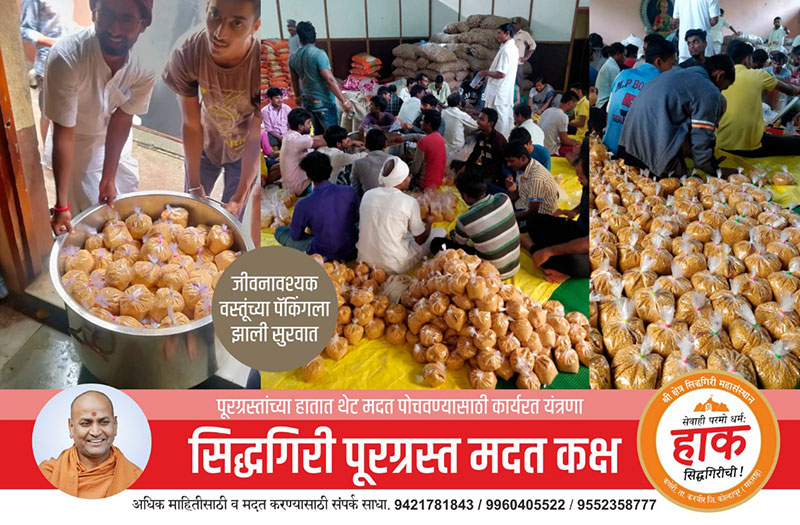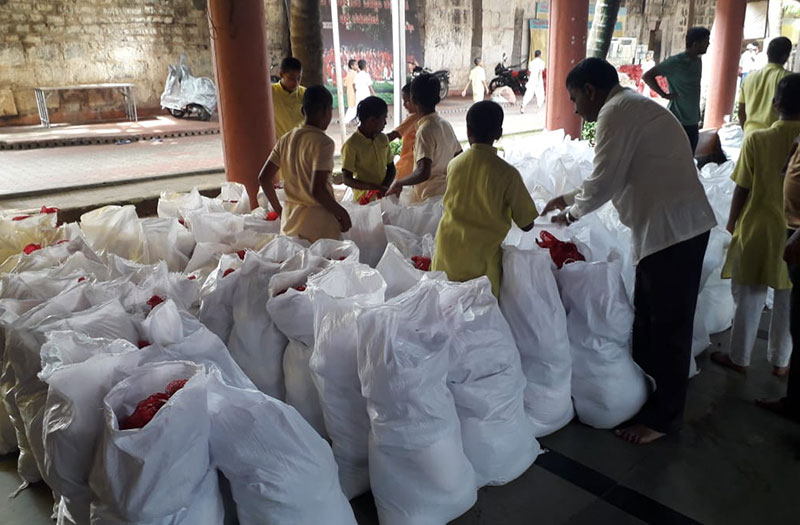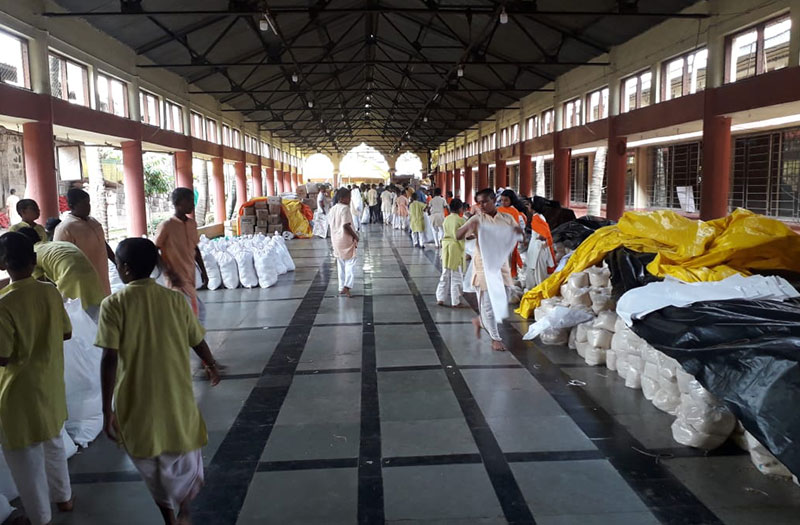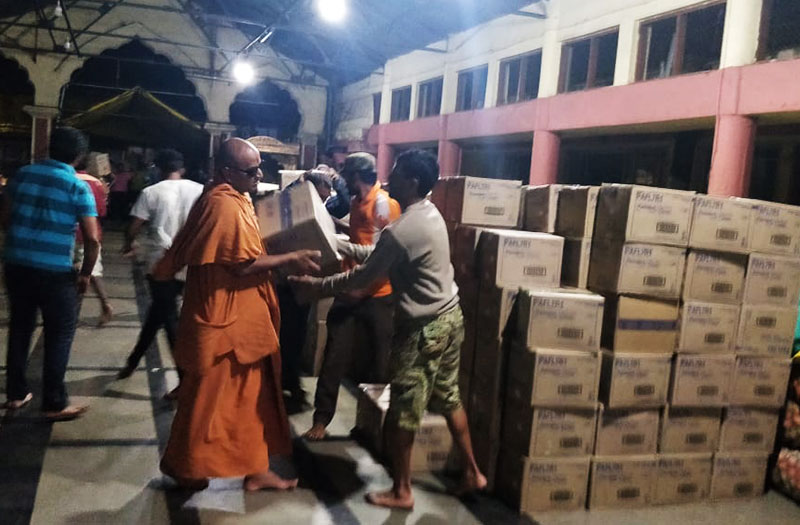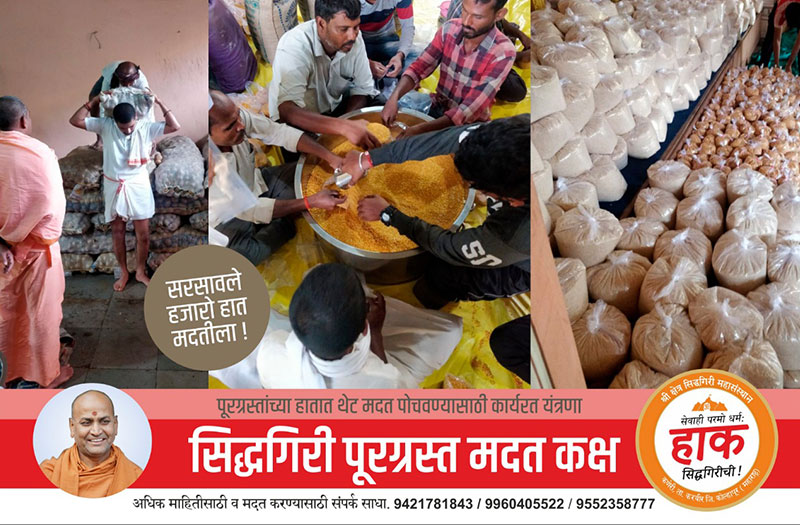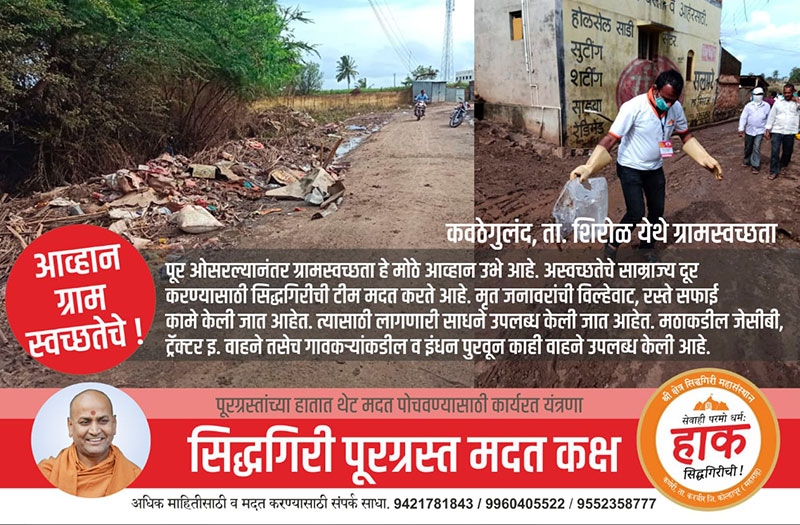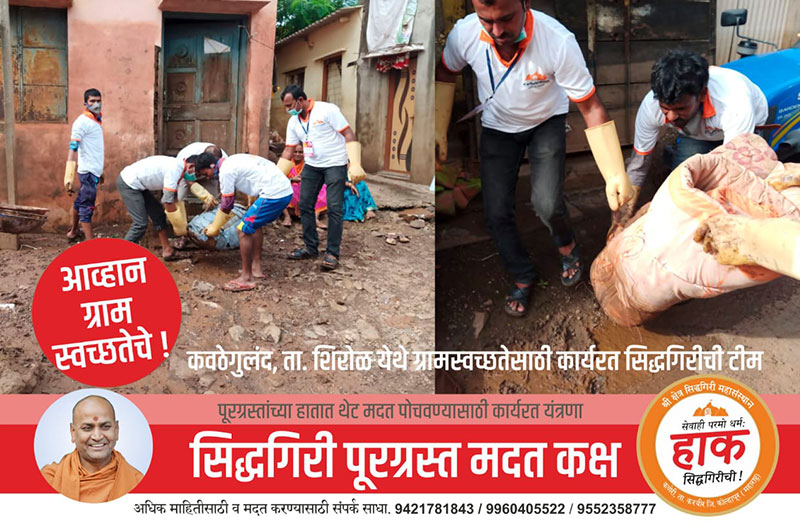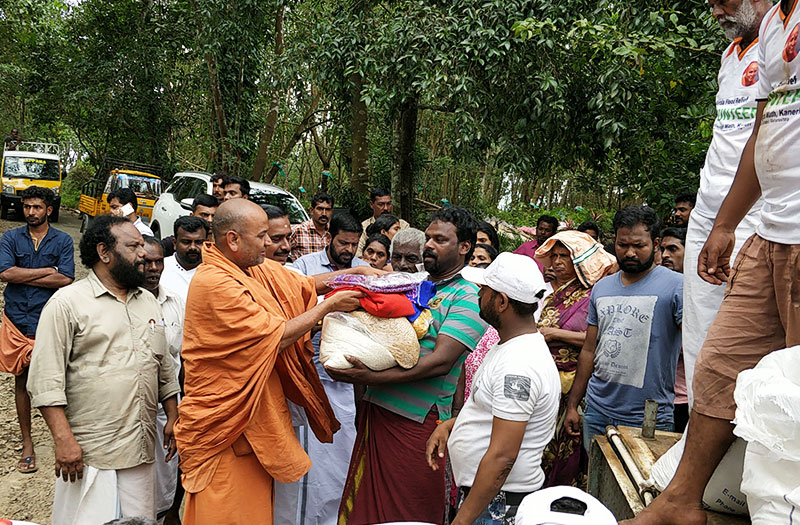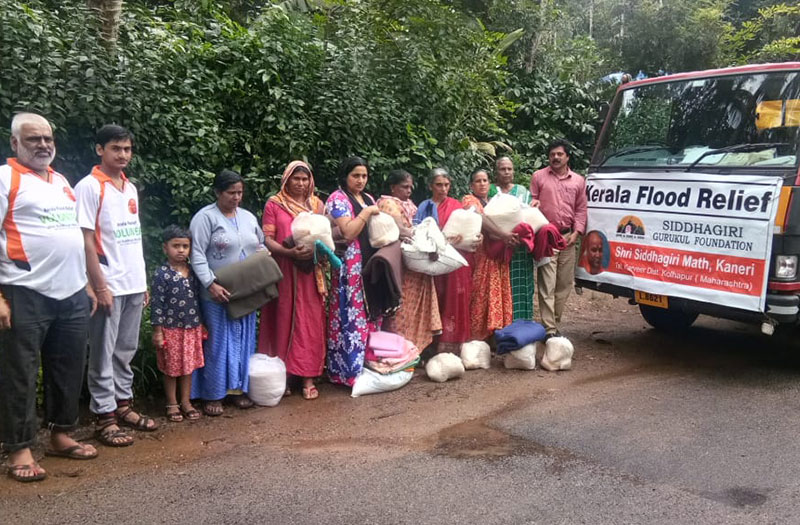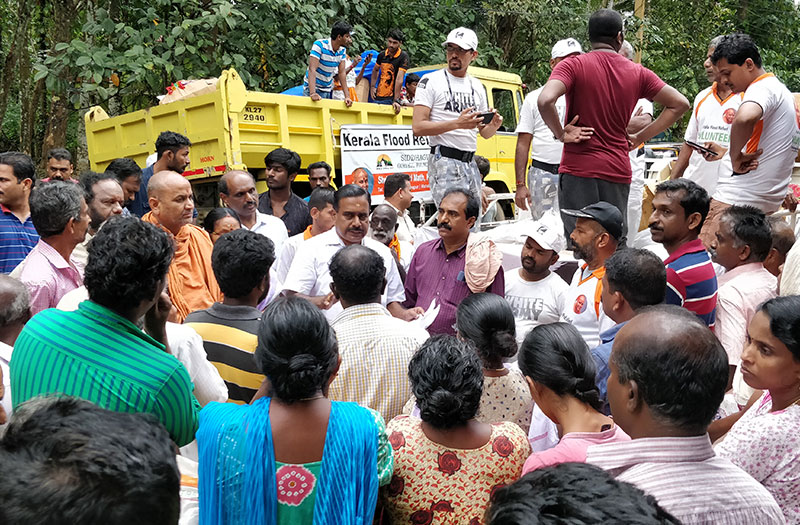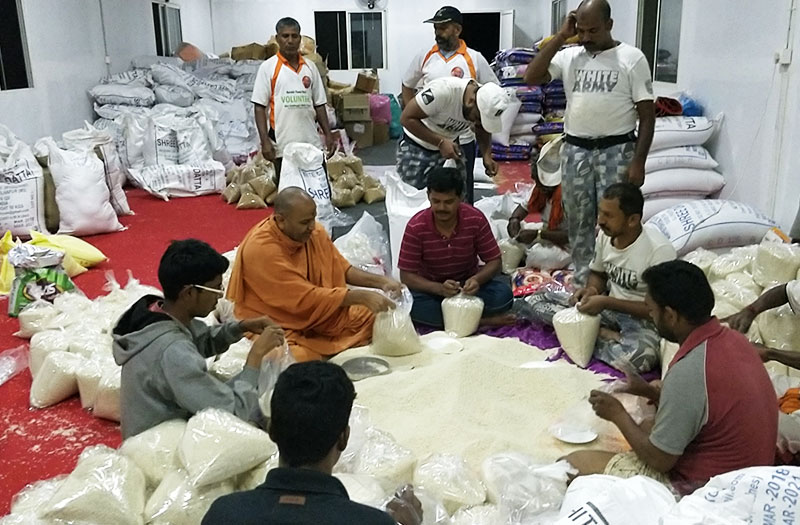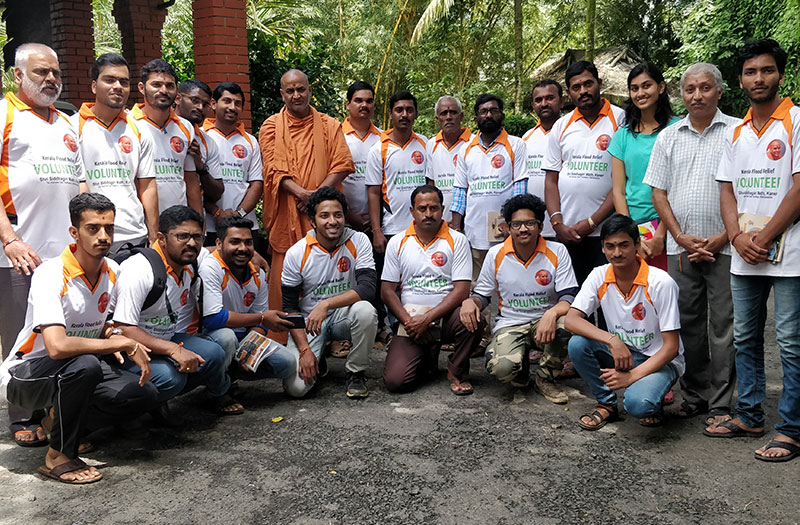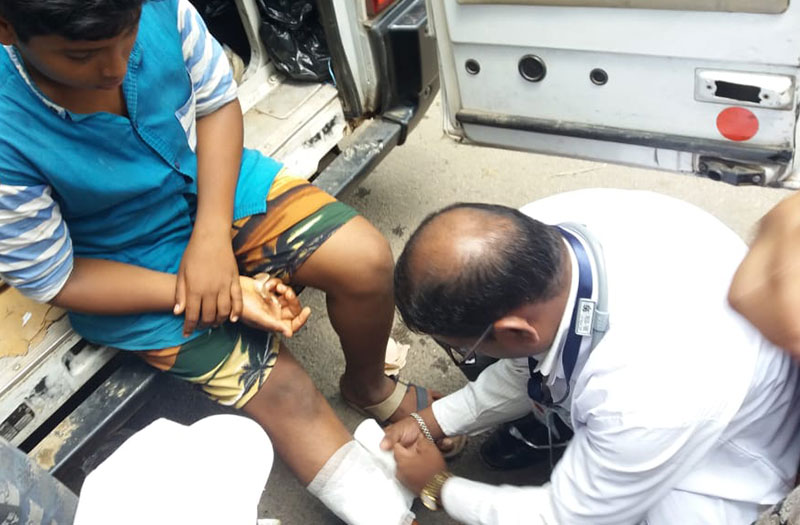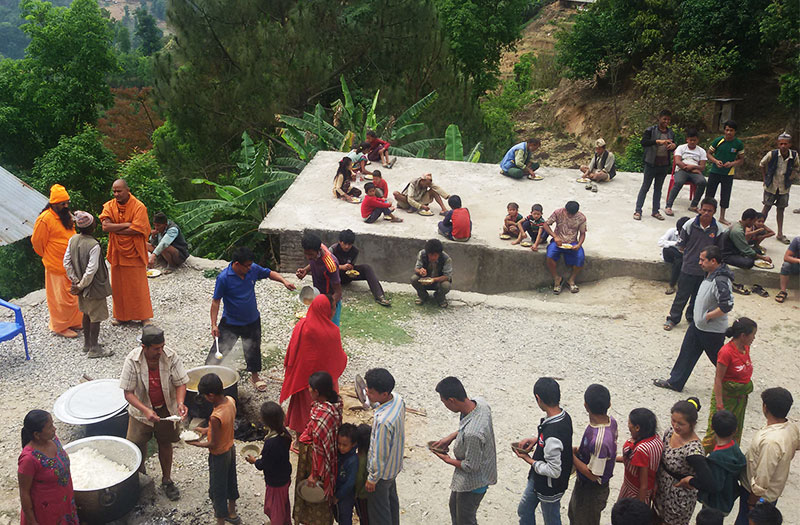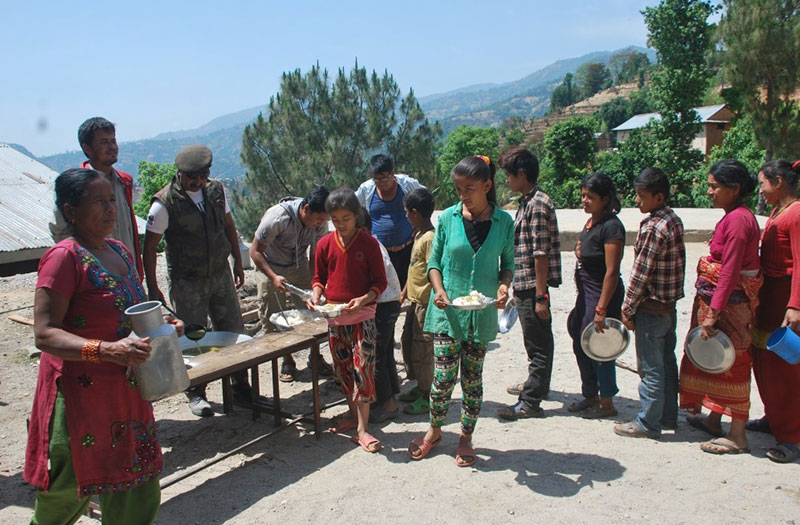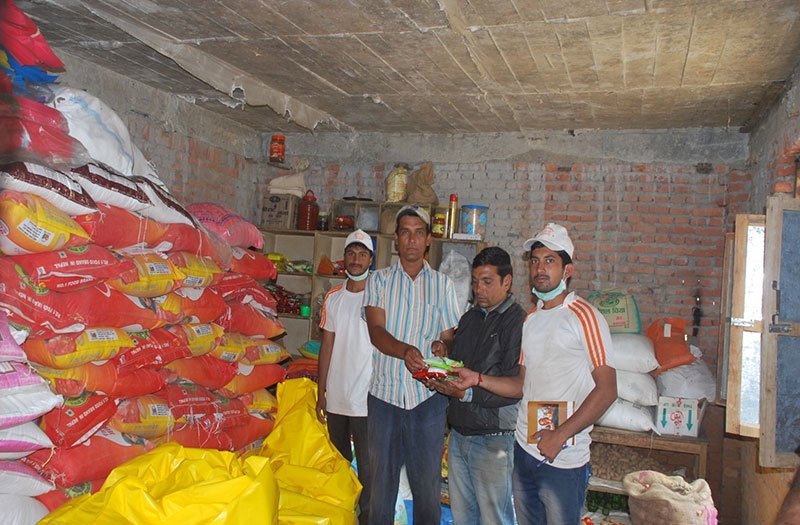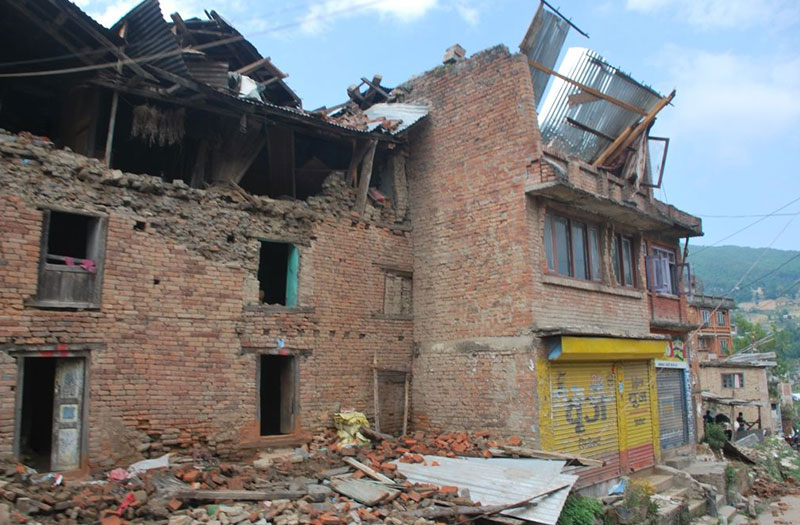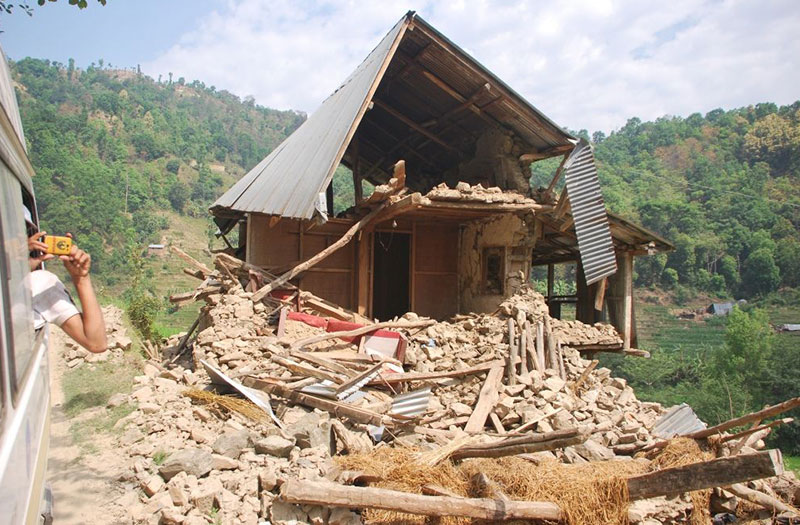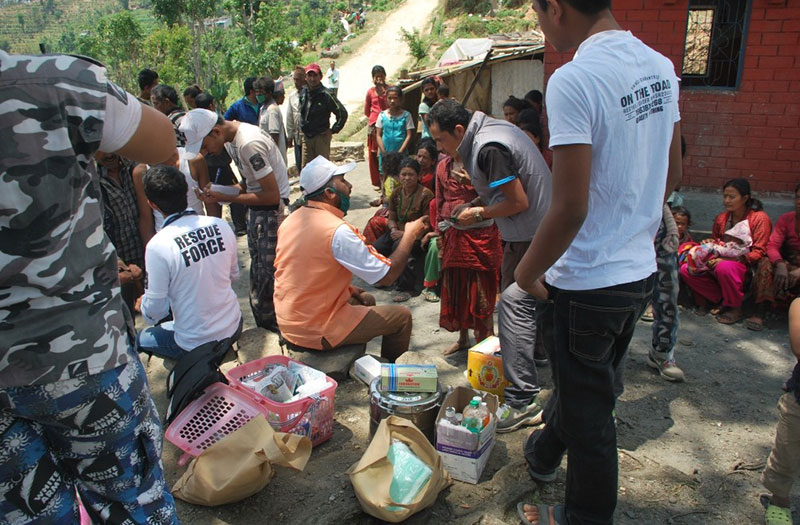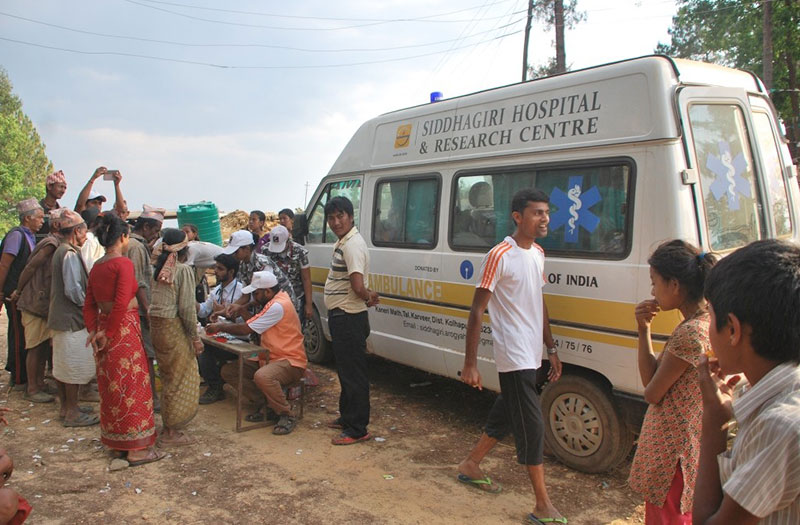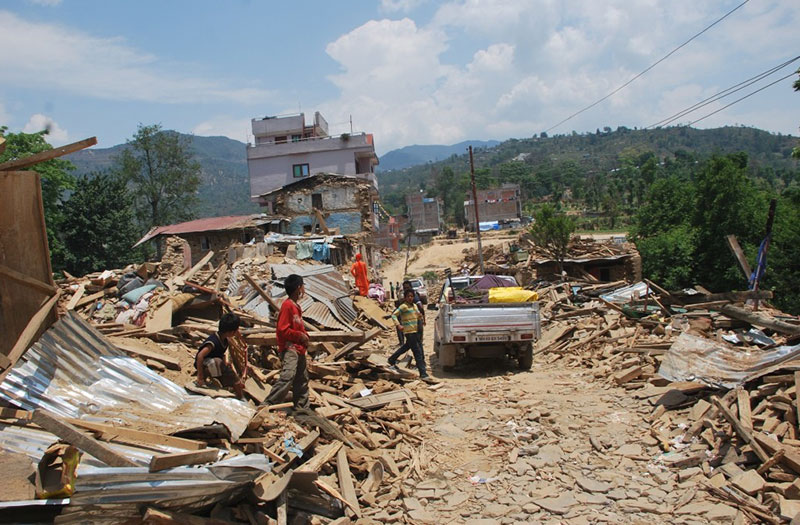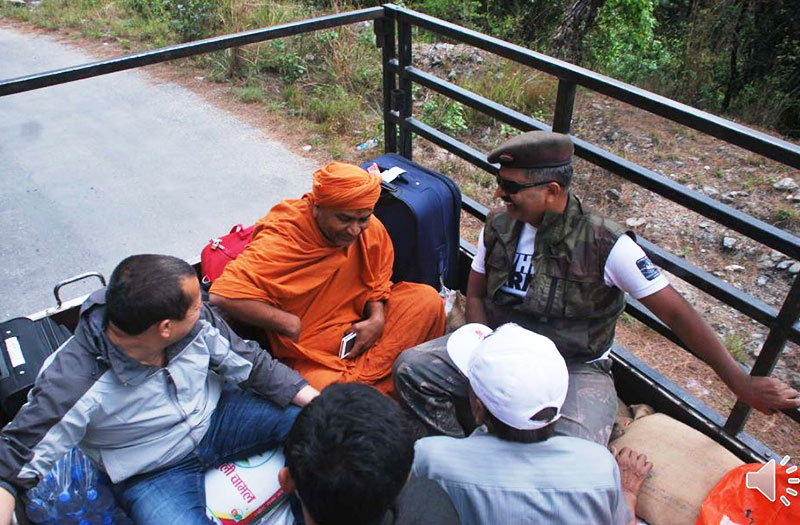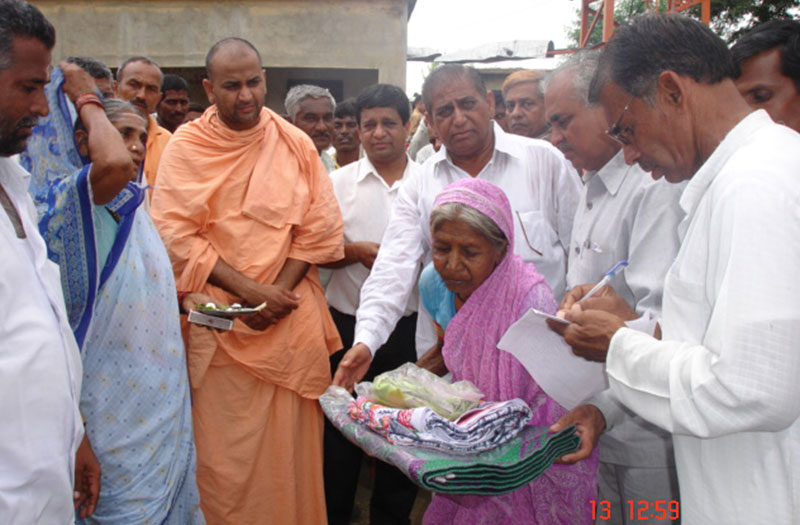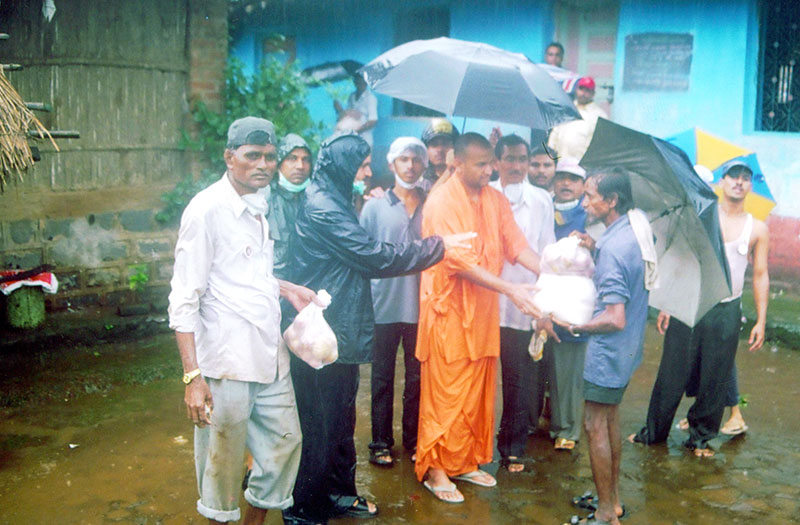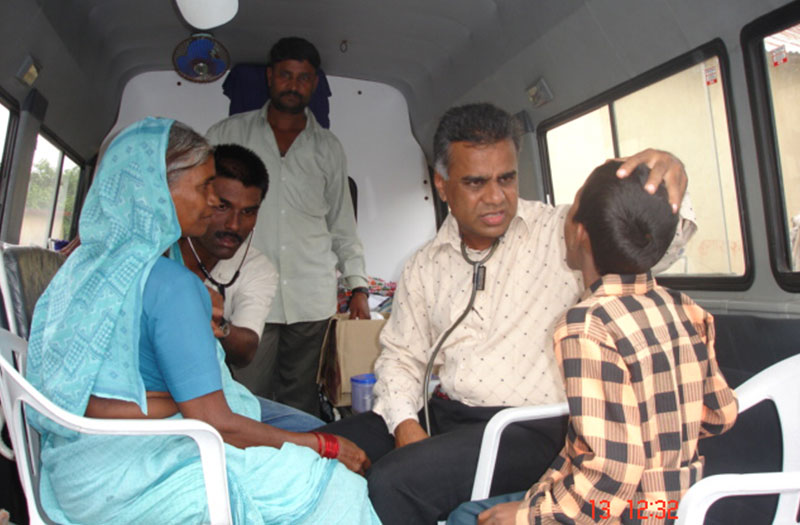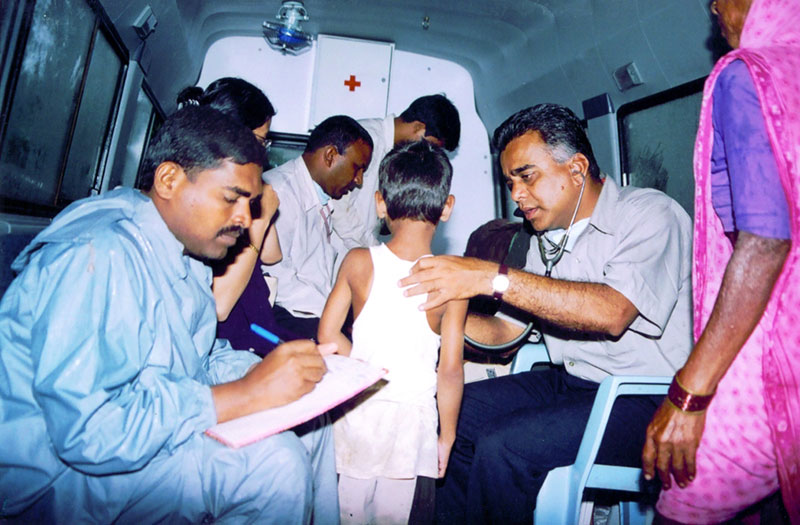Siddhagiri Math
Disaster Management

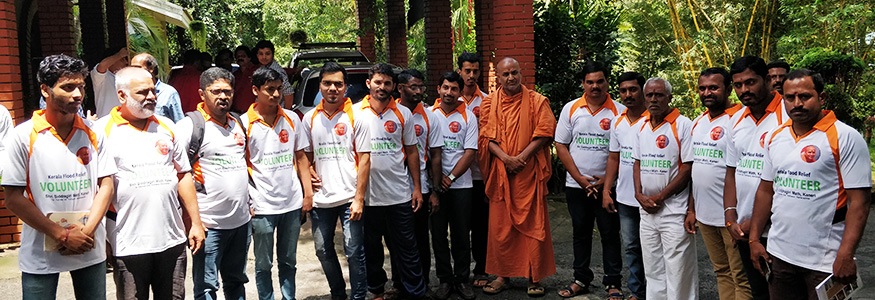
Whether man-made or natural disasters, Siddhagiri Math has always been at the forefront to conserve the lives and the property. Over the last two decades, Siddhagiri Math has also evolved into an efficient disaster management centre which tackles manifold requirements that emerge during the calamities.
Siddhagiri Disaster Management Team consists of various stakeholders and contributors. Jeevan Mukti Seva Sansta (White Army), an NGO working in Kolhapur region, volunteers from the Math and the trained rescuers, together, have been carrying out the relief and rescue operations across the nation whenever and wherever needed.
Over the period of years, through its ground-zero experiences, the Disaster Management Team has developed its own methodology of tackling the calamities. The team has always kept itself prepared on three progressive fronts:
1. Rescue:
As per the need, Siddhagiri Disaster Management team sends a rescue operation team which includes trained rescuers. Once the team reaches the affected site, it prepares the list of the victims and the afflicted ones and chalks out a relief operation plan to be executed.
2. Distribution of food and medicines:
Along with ongoing rescue operations, another team carries out the necessary tasks of collecting food, clothing and medicines. They prepare the 'kits of essentials' to be distributed and the next team is sent with these kits to the disaster hit areas. As the relief package arrives, the 'kits' are distributed to already identified people. The team also shoulders various responsibilities such as carrying rescue work, relocating the affected ones, providing meals, clothing and essentials; taking measures to prevent diseases and epidemics; restoring telecommunication and transport services and setting up temporary shelters.
3. Rehabilitation:
Once the rescue operation and the kit distribution is over, a survey is carried out with the purpose of the rehabilitation of the affected. Homes are rebuilt for those who have lost their shelters. The team makes it sure that the affected area is cleaned and restored.
The team has also proved unique in its approach towards managing the disastrous situations. During the calamities, volunteers from the Math reach out to the respective locations, analyze the situation and chalk out action map to provide medical facilities and necessary resources
Over the last two decades, with its uniquely designed approach towards disaster management, the Siddhagiri Disaster Management team has always stood rock solid during the emergency situations in the country.
Fight against Covid 19:
First Covid 19 patient was found in India in March 2020 and within no time the nation was engulfed by the global pandemic. The country of 135 billion underwent four consecutive lock-downs and several remained affected in this state of emergency. Not just for citizens but the fight against the virus spread was no less than an ordeal for the Centre, the State and the civic administration. In this period, Siddhagiri Math made its major contributions in the district of Kolhapur by catering the citizens their daily meals. The Math also distributed kits of essential commodities to the migrant labourers of the region. In these trying times, the Math everyday provided meals to over 400 police personnel and the destitute in the region.
Kolhapur Floods, 2019:
During the 2019 rainy season, the districts of Kolhapur and Sangli fought the unprecedented battle against the floods. Hundreds of villages in the region were marooned and flooded due to heavy downpour in Konkan and western parts of the state of Maharashtra.
The Disaster Management Team here took few unparalleled initiatives to tackle the situation. Over 3500 citizens residing along the Panchaganga river bank, Kolhapur city and in the villages like Kavthelgund were accommodated at Siddhagiri Math, Kaneri village and Karveer district immediately.
Livestock management during the floods was quite a challenge at Kavthelgund village. During this catastrophic event, thousands of cattle were carried away in fast-moving flood waters, leaving their carcasses strewn across the villages and adding to the risk of spreading leptospirosis infection among the livestock. In this critical situation, the rescue team took up the challenge of handling and disposing of animal carcasses in the area. The rescue team helped villagers to safely dispose of the carcasses, thus limiting the risk of infection in the village. Once the water levels receded after the flood, the rescuers cleaned the entire village by spraying disinfectants. Post floods, many cases of electrocution cropped up in the region and the rescue team helped the villages to restore its electricity supply.
Residents from Rajapur village too had lost their homes in the floods. The Disaster Management Team built over 100 new homes in the village and the then Home Minister of State, Mr Chandrakant Patil acknowledged the efforts taken by the Math
During the floods, over 3500 people were accommodated at the Math and the rescue team saved the lives of over 5000 people from the region.
Picture Gallery

Kerala Floods 2018:
In 2018, due to unusual high rainfall during the monsoon season, severe floods affected the south Indian state of Kerala. '2018 flood' was termed as the worst flood of the century in Kerala.
In this crisis, Siddhagiri team reached Wayanad - a remote village in Kerala and carried out rescue and rehabilitation work. During the flood, the village was isolated completely and even the government had no ways to reach the affected residents. Siddhagiri team saved over 5000 people and with the help of 10 doctors and 30 medical staff, more than 40 medical camps were set up in the region. The team also undertook the relief work to alleviate the sufferings of the people and set up community kitchens, distributed clothes and essential commodities.
Picture Gallery

Nepal Earthquake, 2015:
In April 2015, Nepal witnessed the unprecedented devastating earthquake which killed nearly 9,000 people and injured more than 22,000. It was considered as the worst natural disaster to strike Nepal since the 1934 Nepal–Bihar earthquake. Hundreds of villagers in Nepal became homeless and many World Heritage Sites in the valley were destroyed which included Bhimsen Tower, a nine-storey tower recognized by UNESCO. Siddhagiri Disaster Management Team played a pivotal role in restoring the lives of the Nepalese in the region. Galvanised sheets were provided for setting up the makeshift homes with attached toilets and bathrooms. The team introduced the first of its kind technique of setting up homes which are unique and easy to raise. Food grains were made available and community kitchens were set up in more than 100 villages. The team itself once faced a challenge when the truck carrying relief package was looted on the way towards the destination. The team working relentlessly refused to lose the hope and arranged for another package.
Through mobile health clinics, doctors and nurses, the best of healthcare facilities were provided to all the needy ones. Later, the relief work carried out by the Siddhagiri team was appreciated by the former Prime Minister of Nepal, Mr Madhahv Kumar.
Picture Gallery

Mumbai-Konkan Floods 2005:
In 2005, Mumbai, the financial capital of the country and the districts of Konkan viz. Ratnagiri and Chiplun got worst hit due to torrential rainfall in the region. Over 1000 people lost their lives and the bustling city came to standstill. In these times, the team from Siddhagiri extended their helping hand to the needy ones. An ambulance arranged by Siddhagiri team played a crucial role in treating number of patients from the region.
Picture Gallery

Bhuj Earthquake of 2001:
2001 Gujarat earthquake, also known as Bhuj earthquake occurred on 26 January morning. The epicentre of the earthquake was about 9 km southwest of the village of Chobari in Bhachau Taluka of Kutch District of Gujarat, India. During these times, Siddhagiri team played a major role in the reconstruction and rehabilitation of the city. A team of 30 people carried out the relief work in the region. Besides, food packets, clothes and medicines were provided to the needy in the region.

